Enhanced Performance of a Hydrokinetic Turbine through a Biomimetic Design
Abstract
:1. Introduction
2. Materials and Methods
2.1. Numerical Model
2.2. Biomimetic Design
3. Results and Discussion
4. Conclusions
Author Contributions
Funding
Institutional Review Board Statement
Informed Consent Statement
Data Availability Statement
Conflicts of Interest
References
- Jacobson, P. Assessment and Mapping of the Riverine Hydrokinetic Energy Resource in the Continental United States; Technical Report; Electric Power Research Institute: Palo Alto, CA, USA, 2012. [Google Scholar]
- Quaranta, E.; Bodis, K.; Kasiulis, E.; McNabola, A.; Pistocci, A. Is There a Residual and Hidden Potential for Small and Micro Hydropower in Europe? A Screening-Level Regional Assessment. Water Resour. Manag. 2022, 36, 1745–1762. [Google Scholar] [CrossRef]
- Calero Quesada, M.C.; García Lafuente, J.; Sánchez Garrido, J.C.; Sammartino, S.; Delgado, J. Energy of marine currents in the Strait of Gibraltar and its potential as a renewable energy resource. Renew. Sustain. Energy Rev. 2014, 34, 98–109. [Google Scholar] [CrossRef]
- Behrouzi, F.; Nakisa, M.; Maimun, A.; Ahmed, Y. Global renewable energy and its potential in Malaysia: A review of hydrokinetic turbine technology. Renew. Sustain. Energy Rev. 2016, 62, 1270–1281. [Google Scholar] [CrossRef]
- Brasil, A.; Mendes, R.; Wirrig, T.; Noguera, R.; Oliveira, T. On the design of propeller hydrokinetic turbines: The effect of the number of blades. J. Braz. Soc. Mech. Sci. Eng. 2019, 41, 1–14. [Google Scholar] [CrossRef]
- Vaz, J.; Lima, A.; Lins, E. Assessment of a diffuser-augmented hydrokinetic turbine designed for harnessing the flow energy downstream of dams. Sustainability 2023, 15, 7671. [Google Scholar] [CrossRef]
- Khan, M.J.; Bhuyan, G.; Iqbal, M.T.; Quaicoe, J.E. Hydrokinetic energy conversion systems and assessment of horizontal and vertical axis turbines for river and tidal applications: A technology status review. Appl. Energy 2009, 89, 1823–1835. [Google Scholar] [CrossRef]
- Kumar, A.; Saini, R.P. Performance parameters of Savonius type hydrokinetic turbine—A Review. Renew. Sustain. Energy Rev. 2016, 64, 289–310. [Google Scholar] [CrossRef]
- Singh, S.V.; Kumar, P. Study of flow characteristics of a Savonius turbine inside nozzle diffuser duct. J. Eng. Res. 2022. [Google Scholar] [CrossRef]
- Susilo, R.D.; Gunawan, G.; Kurniawati, D.M. Testing the effect of variation of deflector shapes on the performance of the three blade vertical axis Savonius water turbine. J. Tek. Energi 2022, 18, 115–118. [Google Scholar]
- Katayama, Y.; Watanabe, S.; Tsuda, S. Influence of distance from water surface of a horizontally installed Savonius turbine in a rectangular open channel on turbine performance. J. Phys. Conf. Ser. 2022, 2217, 012042. [Google Scholar] [CrossRef]
- Sood, M.; Singal, S.K. Development of hydrokinetic energy technology: A review. Int. J. Energy Res. 2019, 43, 5552–5571. [Google Scholar] [CrossRef]
- Patel, V.; Bhat, G.; Eldho, T.I.; Prabhu, S.V. Influence of overlap ratio and aspect ratio on the performance of Savonius hydrokinetic turbine. Int. J. Energy Res. 2016, 41, 829–844. [Google Scholar] [CrossRef]
- Barbarić, M.; Guzović, Z. Investigation of the possibilities to improve hydrodynamic performances of micro-hydrokinetic turbines. Energies 2020, 13, 4560. [Google Scholar] [CrossRef]
- Mejia, O.D.; Mejia, O.E.; Escorcia, K.M.; Suarez, F.; Lain, S. Comparison of sliding and overset mesh techniques in the simulation of a vertical axis turbine for hydrokinetic applications. Processes 2021, 9, 1933. [Google Scholar] [CrossRef]
- Fertahi, S.; Bouhal, T.; Rajad, O.; Kousksou, T.; Arid, A.; El Rhafiki, T.; Jamil, A.; Benbassou, A. CFD performance enhancement of a low cut-in speed current vertical tidal turbine through the nested hybridization of Savonius and Darrieus. Energy Convers. Manag. 2018, 169, 266–278. [Google Scholar] [CrossRef]
- Talukdar, P.K.; Sardar, A.; Kulkarni, V.; Saha, U.K. Parametric analysis of model Savonius hydrokinetic turbines through experimental and computational investigations. Energy Convers. Manag. 2018, 158, 36–49. [Google Scholar] [CrossRef]
- Tian, W.; Mao, Z.; Zhang, B.; Li, Y. Shape optimization of a Savonius wind rotor with different convex and concave sides. Renew. Energy 2018, 113, 287–299. [Google Scholar] [CrossRef]
- Kumar, A.; Saini, R.P. Performance analysis of a single stage modified Savonius hydrokinetic turbine having twisted blades. Renew. Energy 2017, 113, 461–478. [Google Scholar] [CrossRef]
- Sarma, N.K.; Biswas, A.; Misra, R.D. Experimental and computational evaluation of Savonius hydrokinetic turbine for low velocity condition with comparison to Savonius wind turbine at the same input power. Energy Convers. Manag. 2014, 83, 88–98. [Google Scholar] [CrossRef]
- Samadi, M.; Hassanabad, M.G.; Mozafari, S.B. Performance enhancement of low speed current Savonius tidal turbines through adding semi-cylindrical deflectors. Ocean Eng. 2022, 259, 111873. [Google Scholar] [CrossRef]
- Wahyudi, B.; Soeparman, S.; Hoeijmakers, H.W.M. Optimization design of Savonius diffuser blade with moving deflector for hydrokinetic cross flow turbine rotor. Energy Procedia 2015, 68, 244–253. [Google Scholar] [CrossRef]
- Golecha, K.; Eldho, T.I.; Prabhu, S.V. Influence of the deflector plate on the performance of modified Savonius water turbine. Appl. Energy 2011, 88, 3207–3217. [Google Scholar] [CrossRef]
- Damota, J.; Lamas, I.; Couce, A.; Rodriguez, J. Vertical axis wind turbines: Current technologies and future trends. Renewable Energy Power Qual. J. 2015, 1, 530–535. [Google Scholar] [CrossRef]
- Blanco Damota, J.; Rodriguez, J.D.; Couce, A.; Lamas, M.I. Proposal of a nature-inspired shape for a vertical axis wind turbine and comparison of its performance with a semicircular blade profile. Appl. Sci. 2021, 11, 6198. [Google Scholar] [CrossRef]
- Blanco Damota, J.; Rodríguez García, J.D.D.; Couce Casanova, A.; Telmo Miranda, J.; Caccia, C.G.; Galdo, M.I.L. Optimization of a nature-inspired shape for a vertical axis wind turbine through a numerical model and an artificial neural network. Appl. Sci. 2022, 12, 8037. [Google Scholar] [CrossRef]
- Blackwell, B.F.; Sheldahl, R.E.; Feltz, L.V. Wind Tunnel Performance Data for Two- and Three-Bucket Savonius Rotors; Sandia Laboratories: Springfield, VA, USA, 1977. [Google Scholar]
- Damota, J.B.; García, J.D.; Casanova, A.C.; Miranda, J.T.; Caccia, C.G.; Galdo, M.I.L. Analysis of a nature-inspired shape for a vertical axis wind turbine. Appl. Sci. 2022, 12, 7018. [Google Scholar] [CrossRef]
- Blanco Damota, J. Perfil de pala de Turbina eólica de eje Vertical de Diseño Bioinspirado: Estudio Comparativo y Optimización Mediante Modelo CFD Parametrizado. Ph.D. Thesis, Unviersidade da Coruña, La Coruna, Spain, 2022. [Google Scholar]
- Lamas, M.I.; Rodríguez, J.D.; Rodríguez, C.G.; González, P.B. Three-dimensional CFD analysis to study the thrust and efficiency of a biologically-inspired marine propulsor. Pol. Marit. Res. 2011, 18, 10–16. [Google Scholar] [CrossRef]
- Lamas Galdo, M.I.; Rodriguez Vidal, C.G. Hydrodynamics of biomimetic marine propulsion and trends in computational simulations. J. Mar. Sci. Eng. 2020, 8, 479. [Google Scholar] [CrossRef]


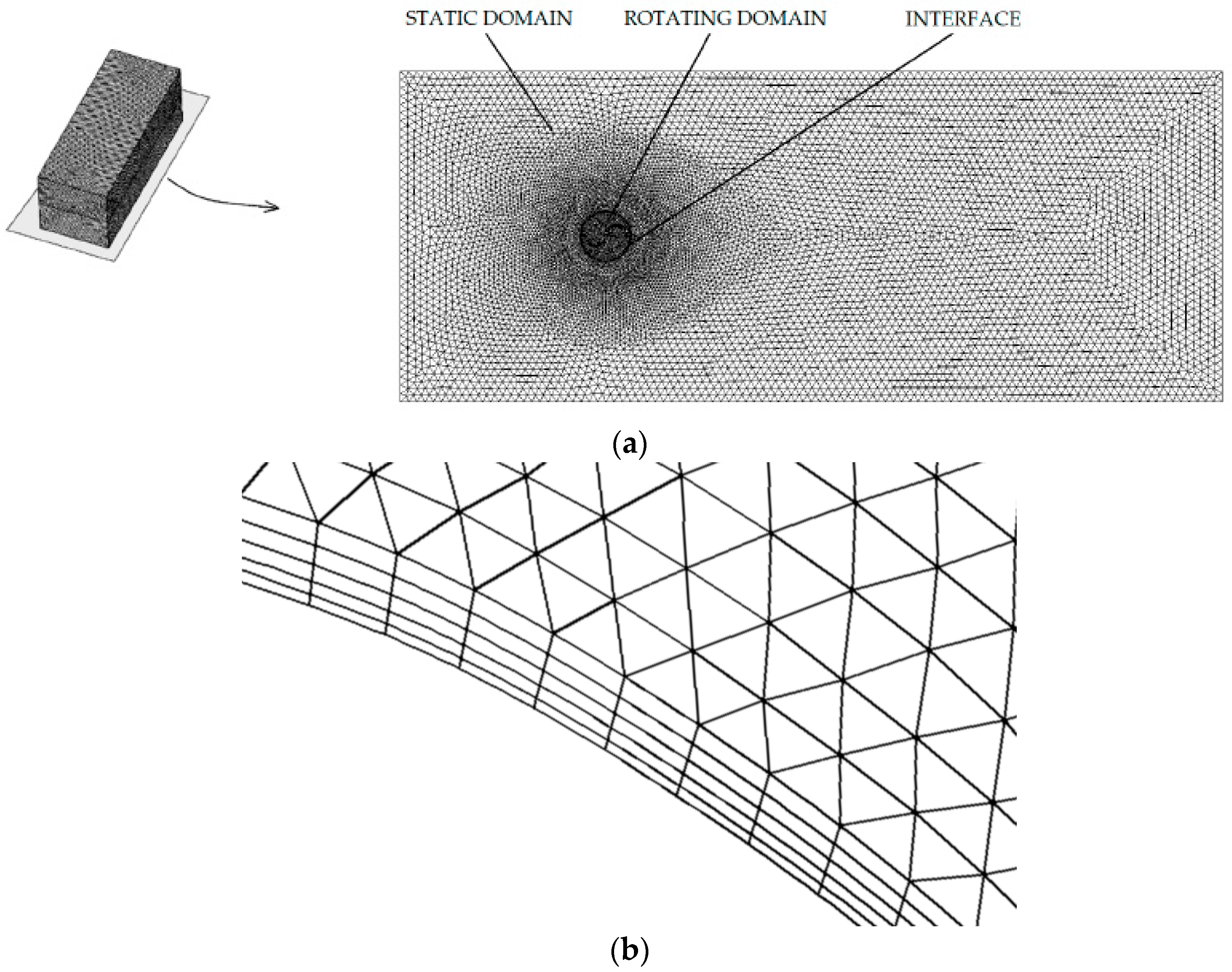
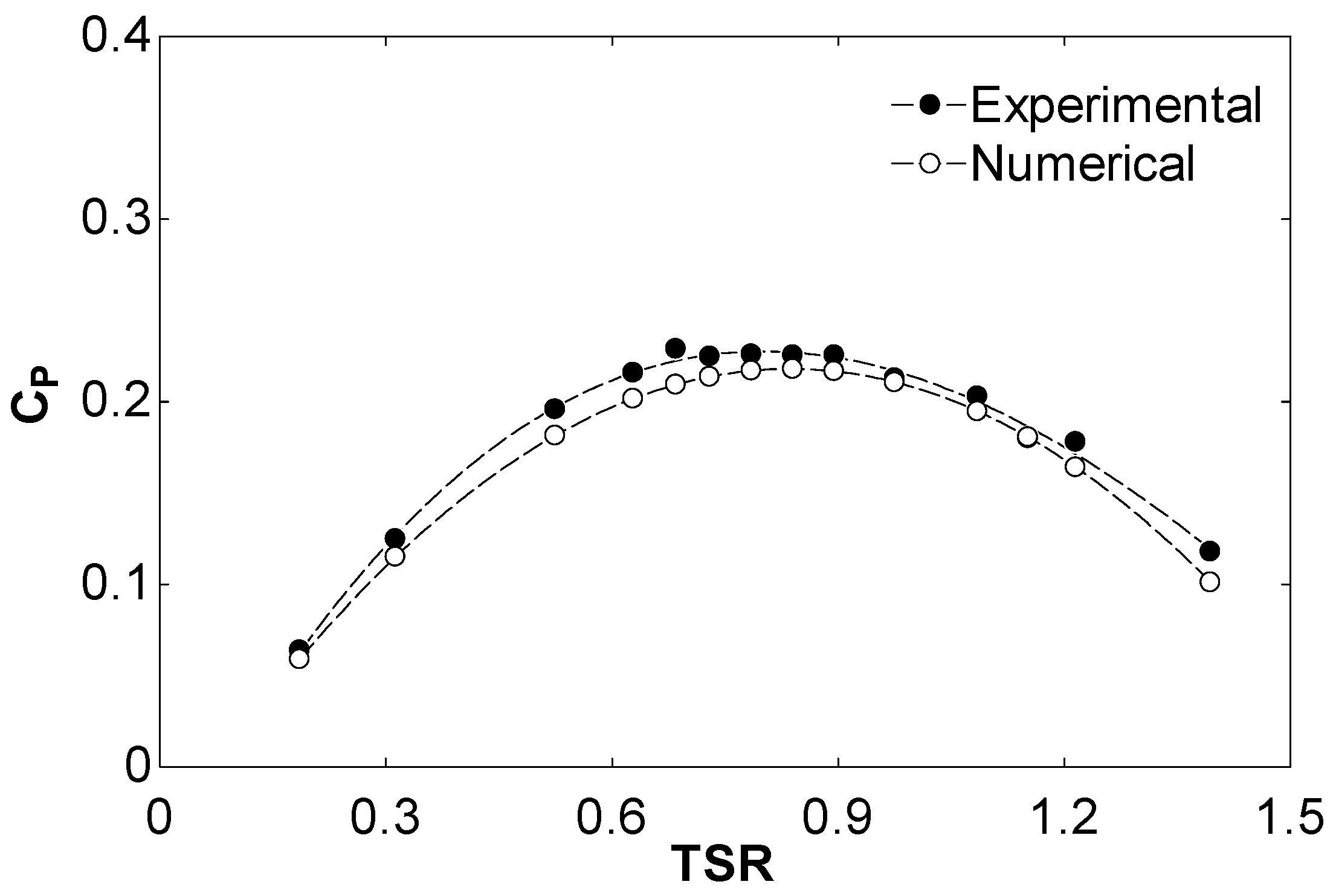
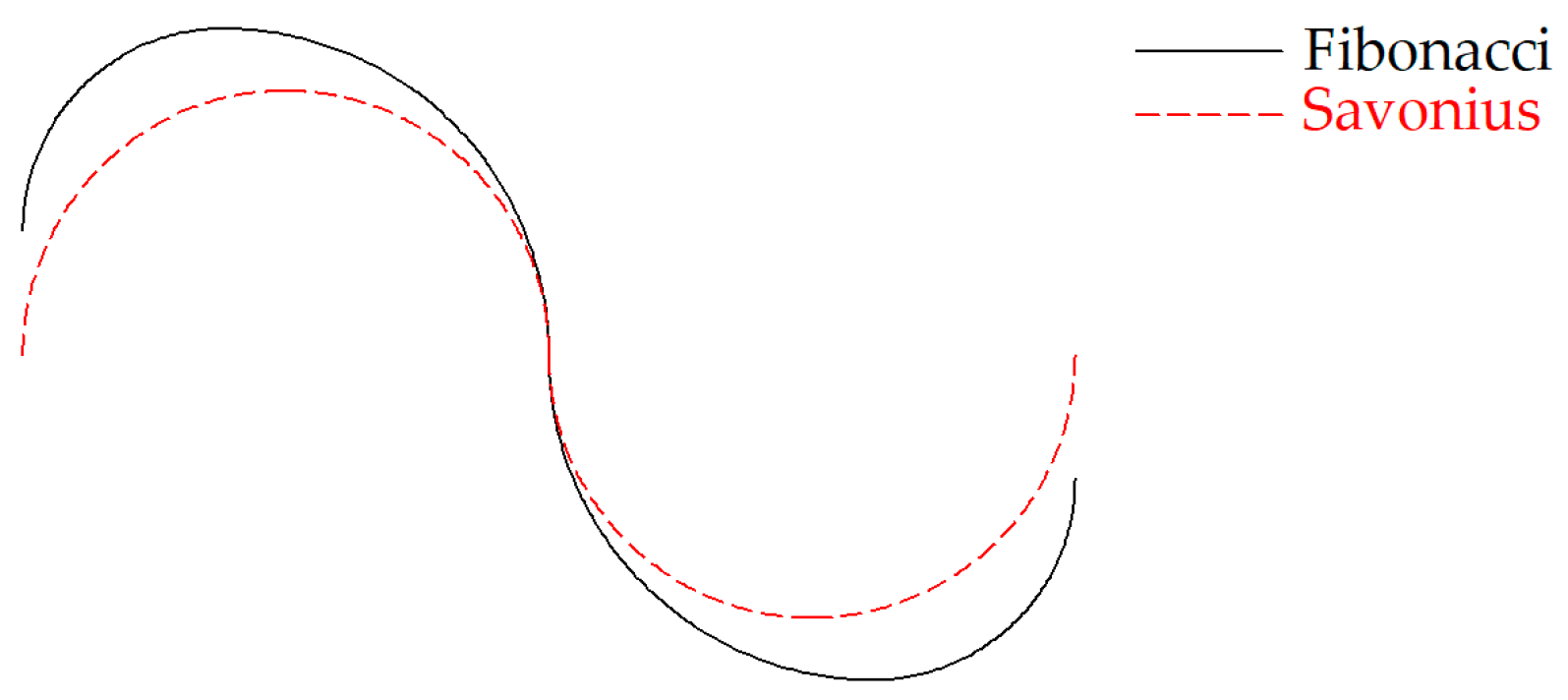
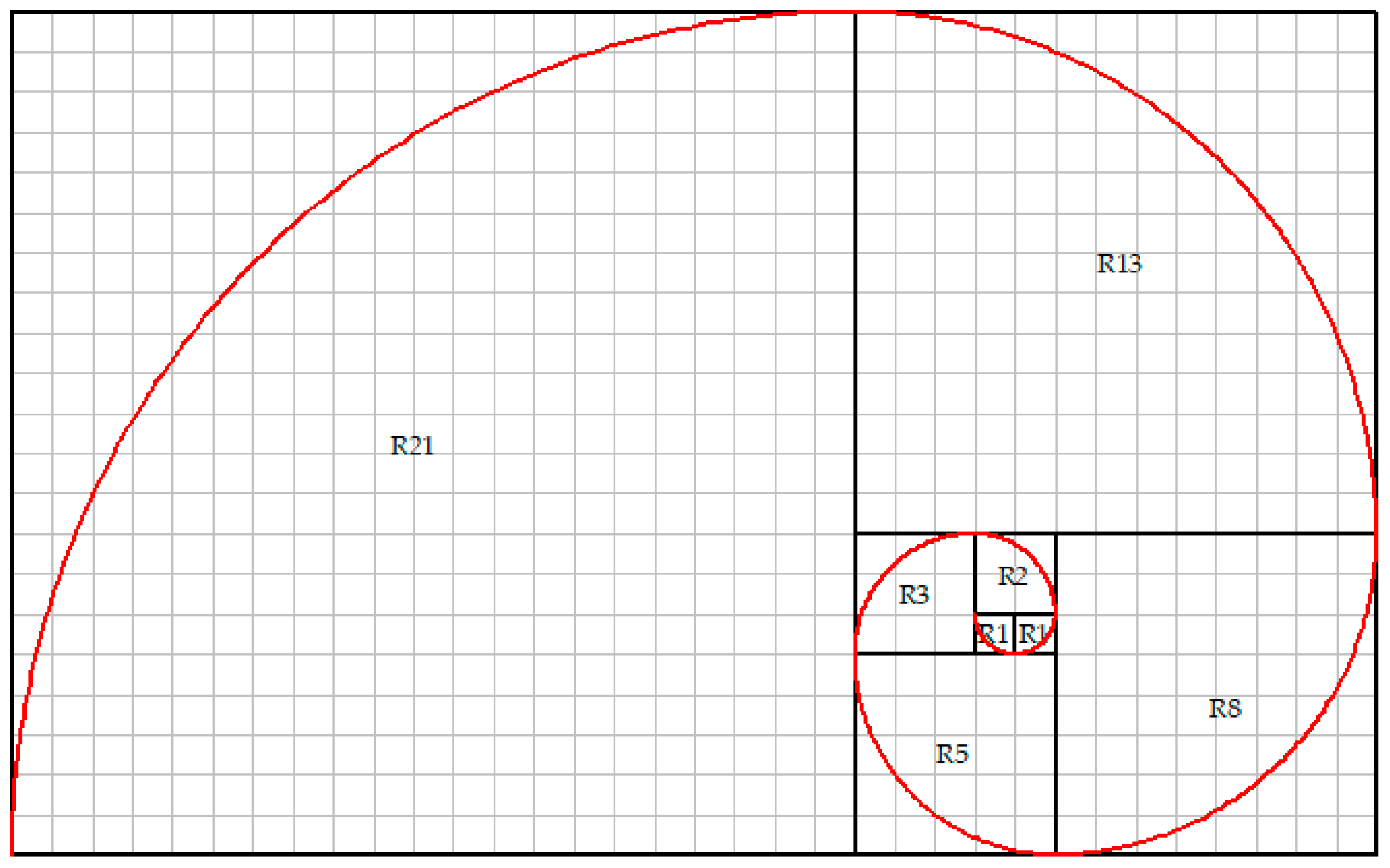
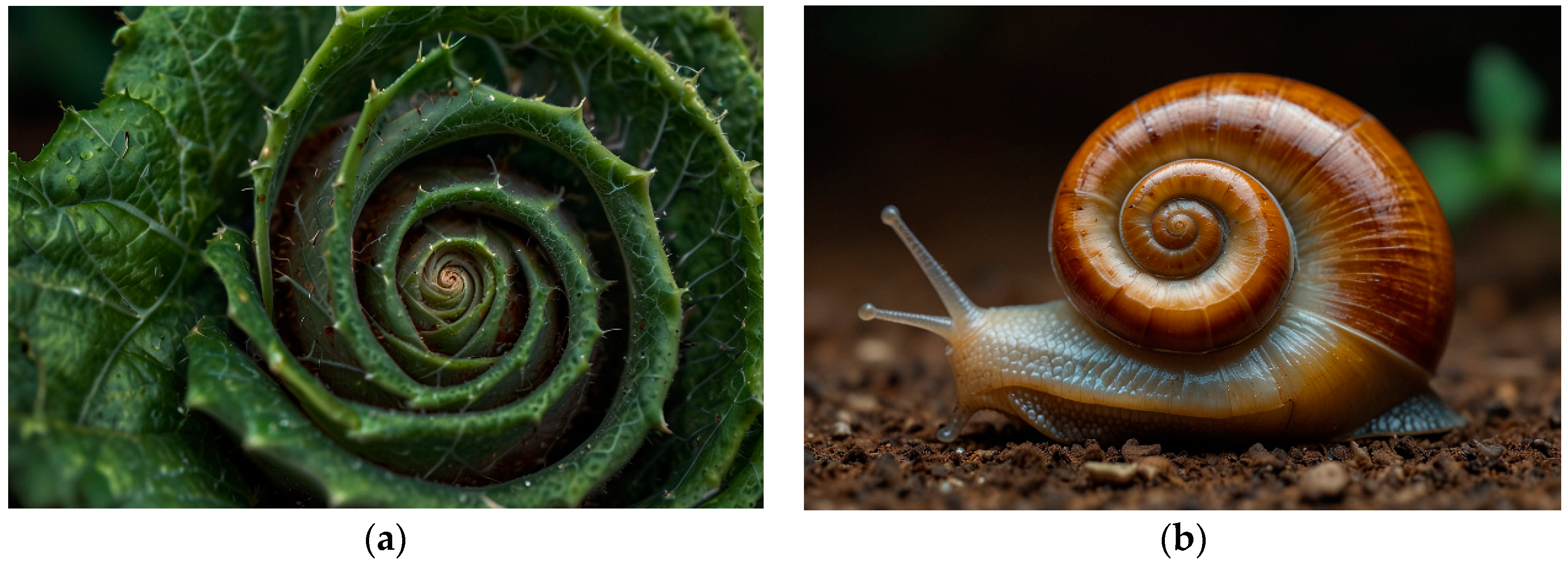
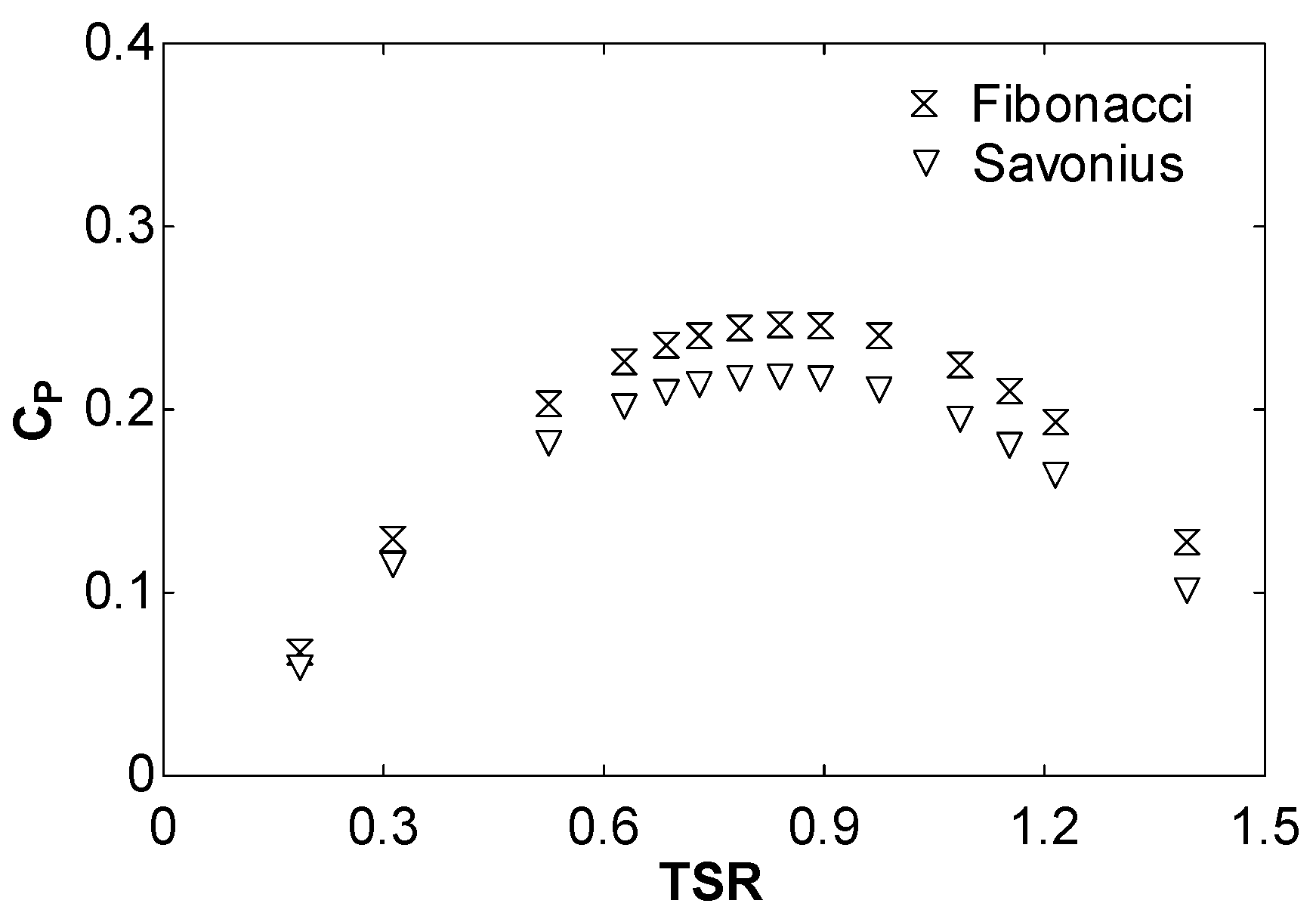
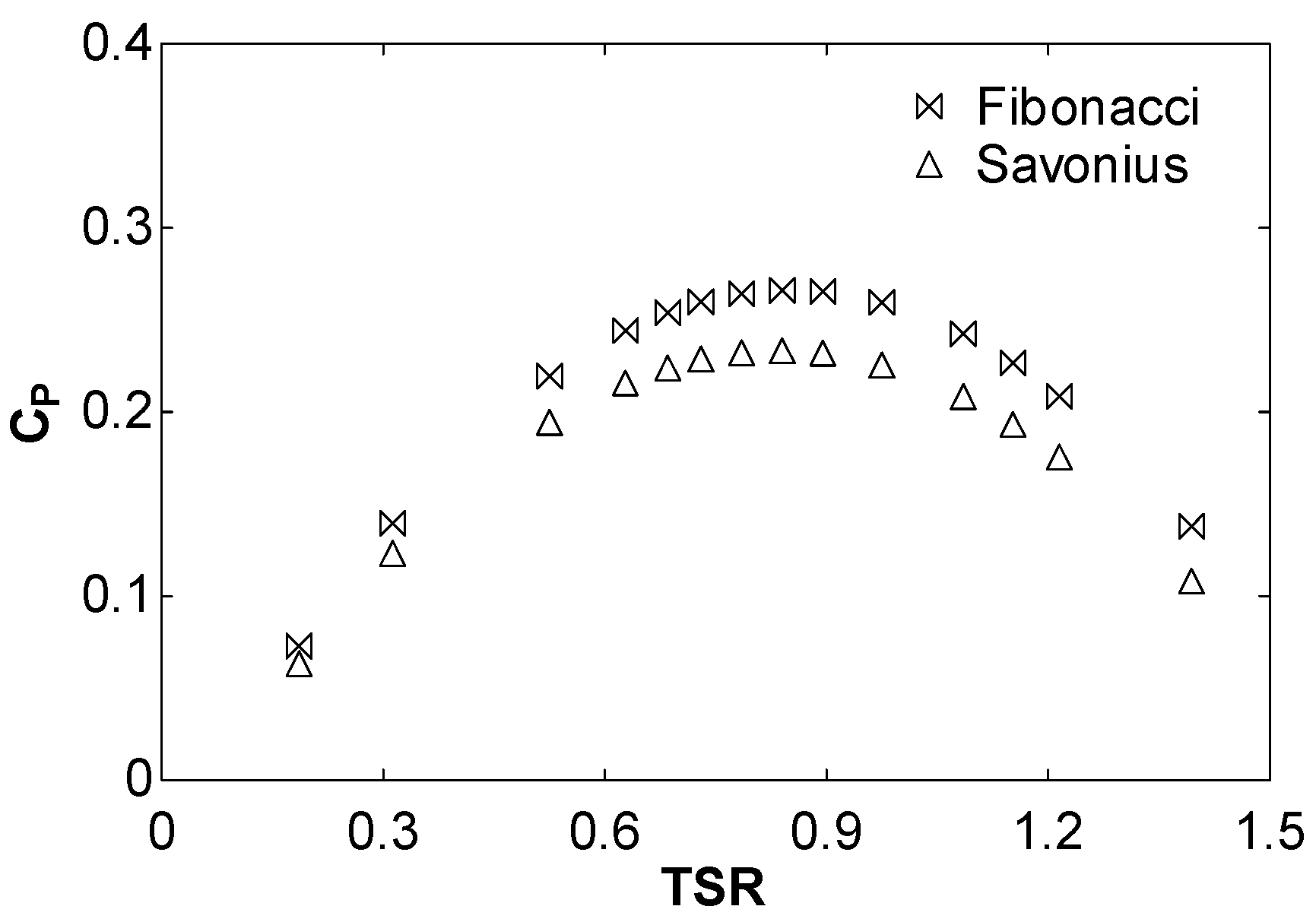
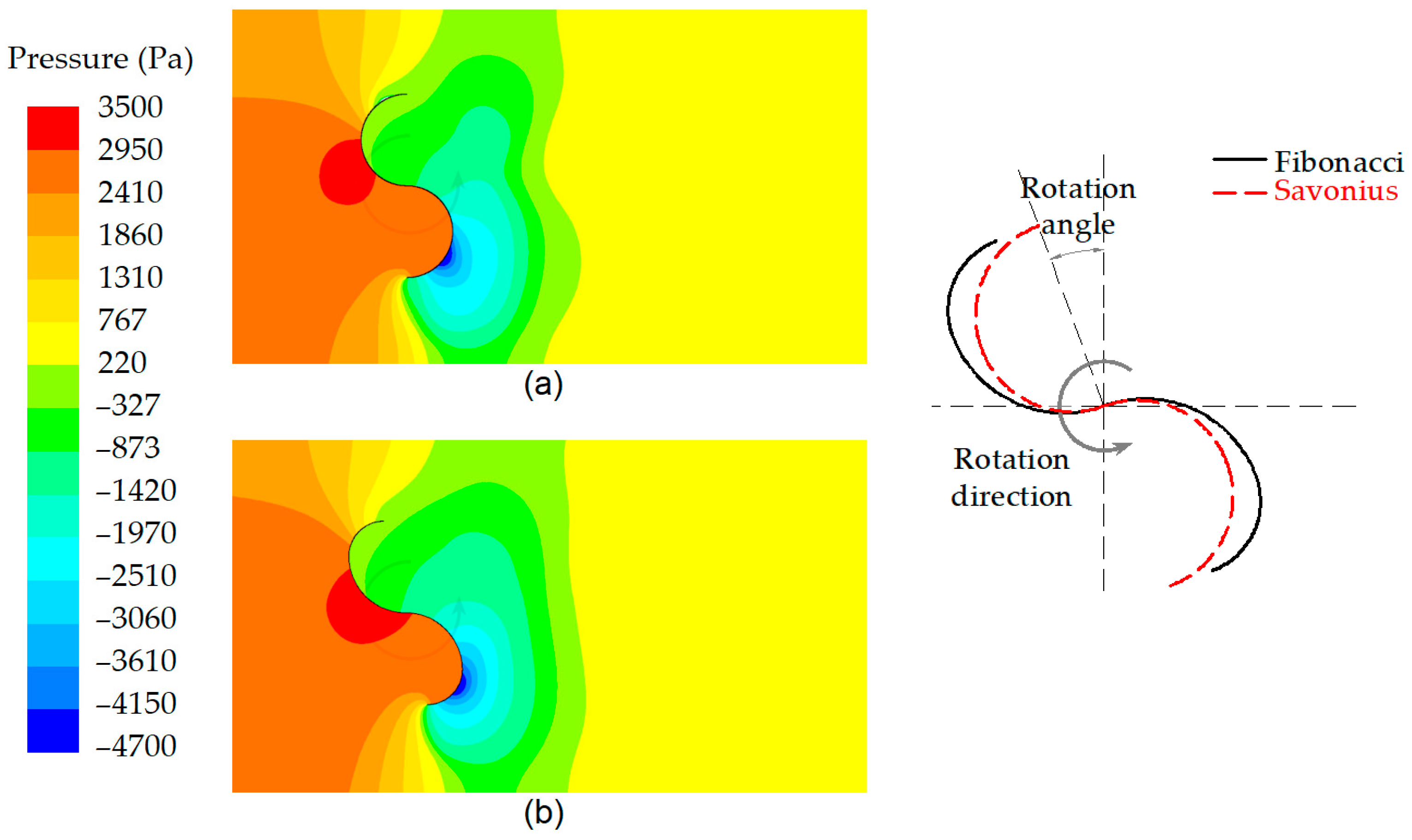
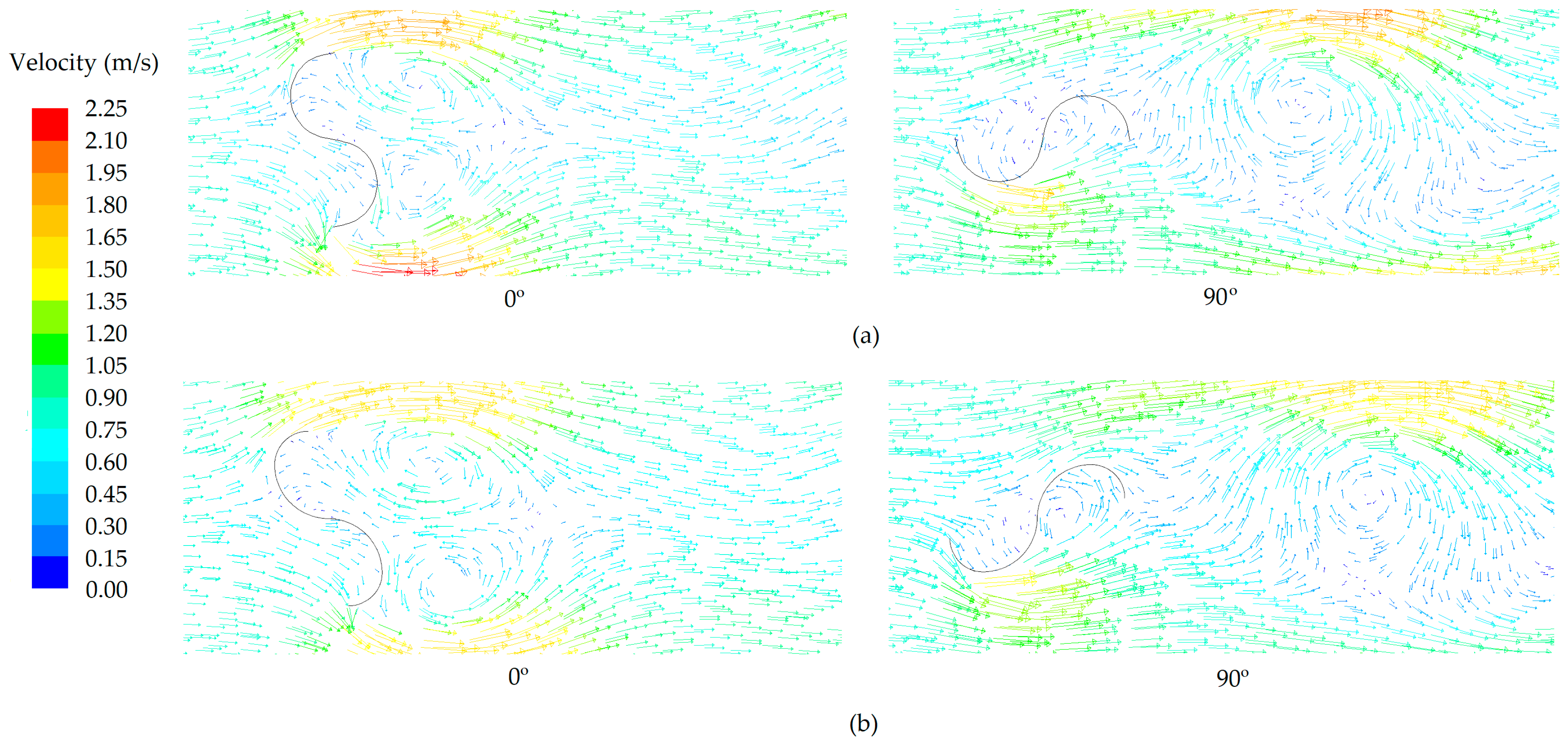
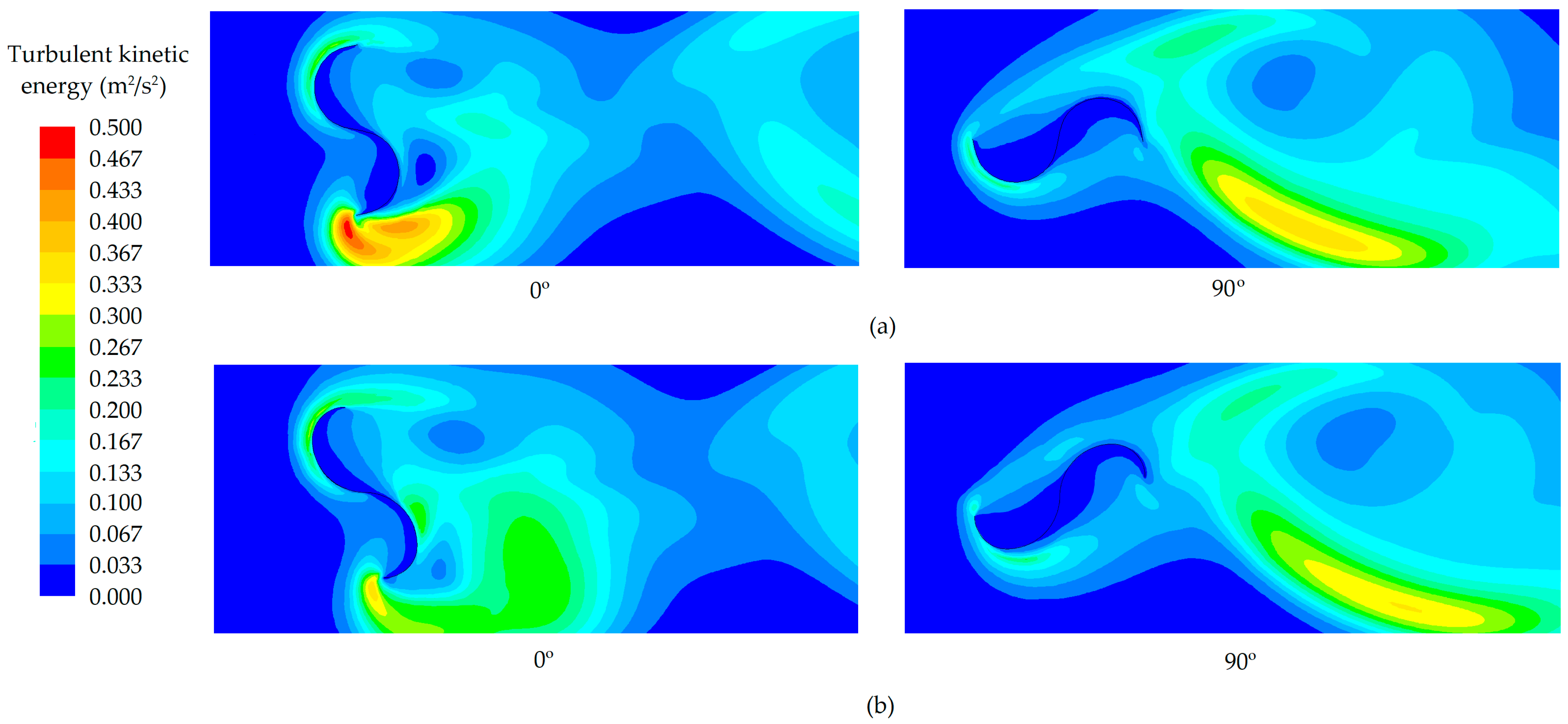



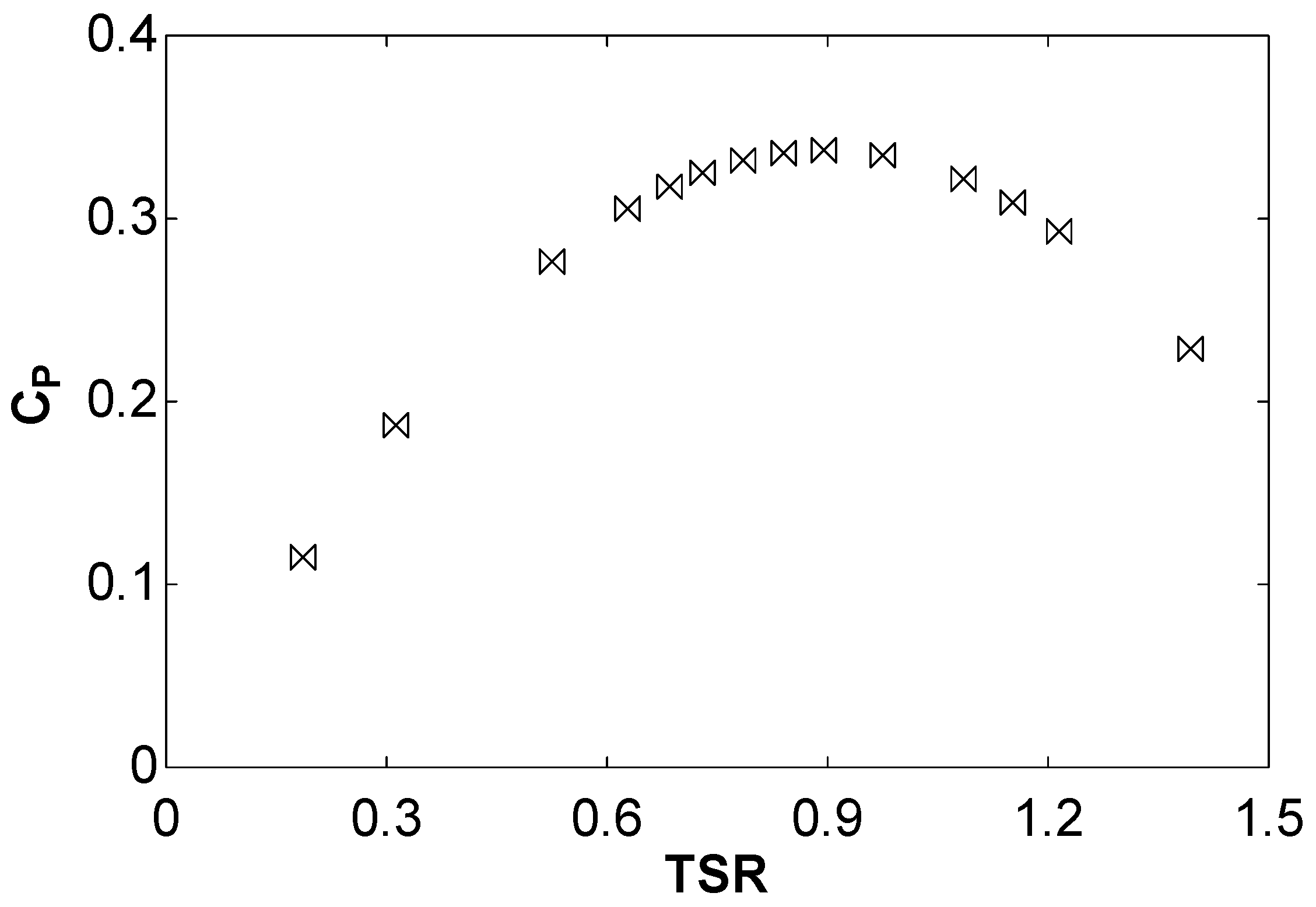
| Governing Equations | Reynolds-Averaged Navier–Stokes (RANS) |
|---|---|
| Turbulence model | SST k-ω |
| Pressure–velocity coupling | PIMPLE |
| Temporal treatment | Implicit |
| Spatial discretization | Second order |
| Convergence criterion | 10−3 |
| Mesh | Elements | Re | CP |
|---|---|---|---|
| 1 | 1.5 × 106 | 199,230 | 0.226 |
| 2 | 2.9 × 106 | 398,460 | 0.212 |
| 3 | 3.8 × 106 | 996,149 | 0.207 |
| 4 | 4.5 × 106 | 1,494,223 | 0.207 |
| V (m/s) | Re | CPmax | |
|---|---|---|---|
| Case 1 | 0.2 | 199,230 | 0.240 |
| Case 2 | 0.4 | 398,460 | 0.249 |
| Case 3 | 1 | 996,149 | 0.266 |
| Case 4 | 1.5 | 1,494,223 | 0.270 |
Disclaimer/Publisher’s Note: The statements, opinions and data contained in all publications are solely those of the individual author(s) and contributor(s) and not of MDPI and/or the editor(s). MDPI and/or the editor(s) disclaim responsibility for any injury to people or property resulting from any ideas, methods, instructions or products referred to in the content. |
© 2024 by the authors. Licensee MDPI, Basel, Switzerland. This article is an open access article distributed under the terms and conditions of the Creative Commons Attribution (CC BY) license (https://creativecommons.org/licenses/by/4.0/).
Share and Cite
Lamas Galdo, M.I.; Rodríguez García, J.d.D.; Couce Casanova, A.; Blanco Damota, J.; Caccia, C.G.; Rebollido Lorenzo, J.M.; Telmo Miranda, J. Enhanced Performance of a Hydrokinetic Turbine through a Biomimetic Design. J. Mar. Sci. Eng. 2024, 12, 1312. https://doi.org/10.3390/jmse12081312
Lamas Galdo MI, Rodríguez García JdD, Couce Casanova A, Blanco Damota J, Caccia CG, Rebollido Lorenzo JM, Telmo Miranda J. Enhanced Performance of a Hydrokinetic Turbine through a Biomimetic Design. Journal of Marine Science and Engineering. 2024; 12(8):1312. https://doi.org/10.3390/jmse12081312
Chicago/Turabian StyleLamas Galdo, María Isabel, Juan de Dios Rodríguez García, Antonio Couce Casanova, Javier Blanco Damota, Claudio Giovanni Caccia, José Manuel Rebollido Lorenzo, and Javier Telmo Miranda. 2024. "Enhanced Performance of a Hydrokinetic Turbine through a Biomimetic Design" Journal of Marine Science and Engineering 12, no. 8: 1312. https://doi.org/10.3390/jmse12081312






